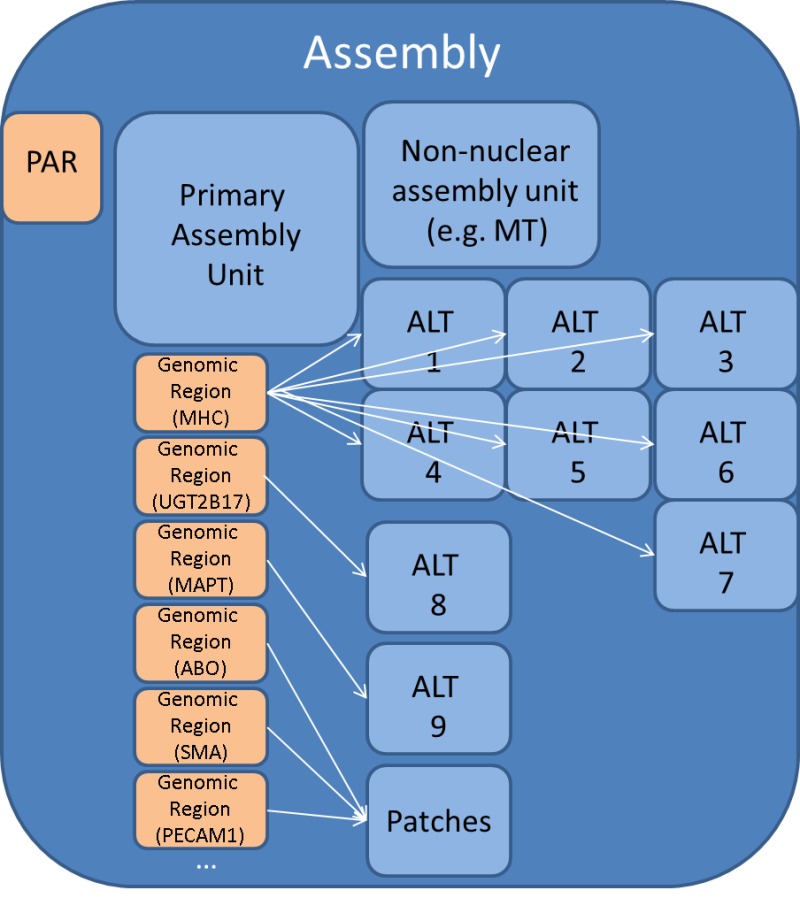From: Genome Reference Consortium

NCBI Bookshelf. A service of the National Library of Medicine, National Institutes of Health.

Schematic representation of the assembly model, showing assembly units and regions. The primary assembly unit is the collection of sequences that provides a haploid representation of the genome. This includes chromosome sequences, as well as unlocalized and unplaced scaffolds. Alternate loci assembly units consist of scaffold sequences that represent variants of sequence present in the primary assembly unit. The Patches assembly unit includes scaffolds that represent updates made to the reference assembly since its last major release. Genomic regions define chromosome extents for which there are alternate loci or patch scaffold representations. The PAR (pseudoautosomal region) defines the extents of homology between the sex chromosomes.
From: Genome Reference Consortium

NCBI Bookshelf. A service of the National Library of Medicine, National Institutes of Health.